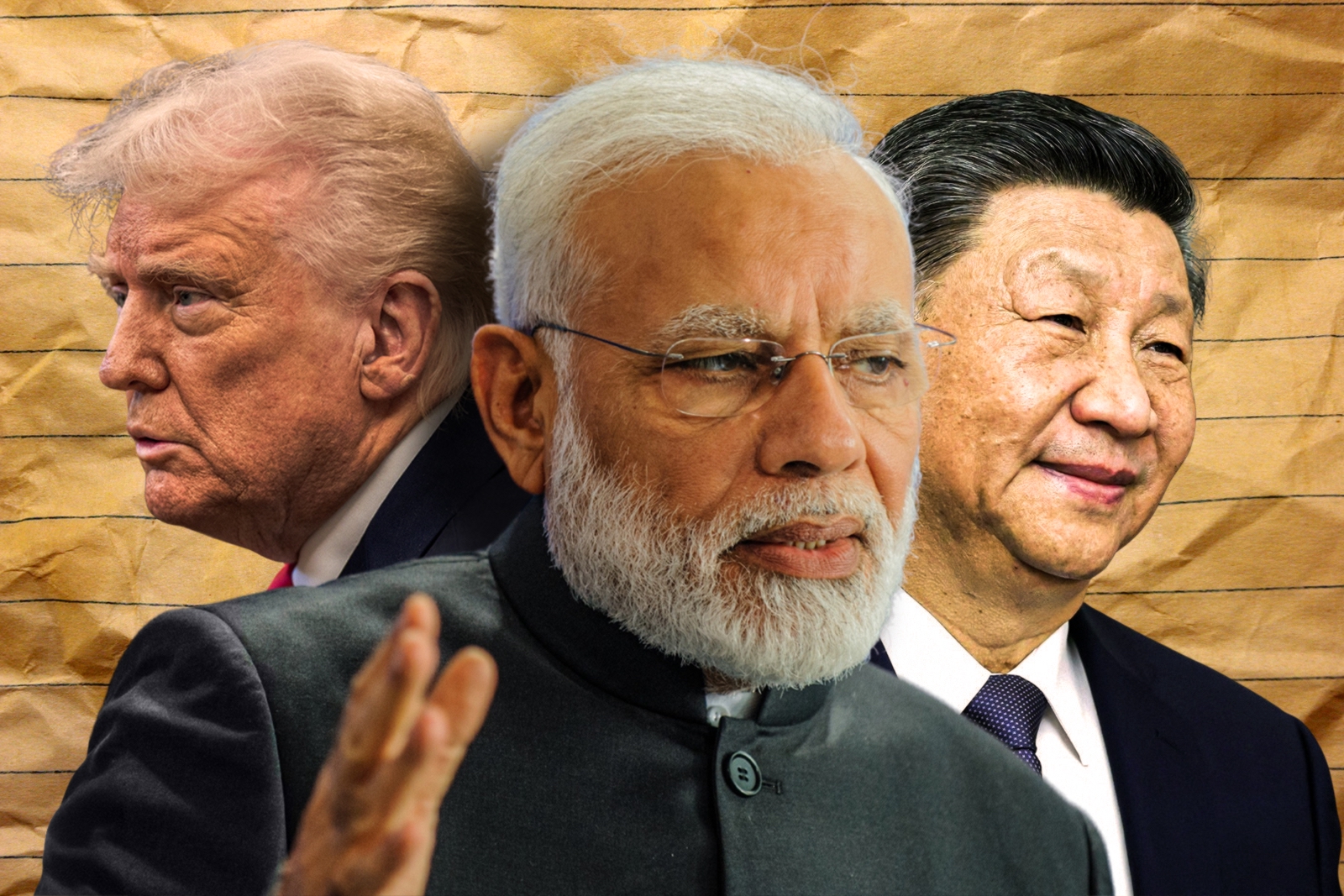
When Trump’s Leverage Meets Modi’s Mandate
In geopolitics, ruptures seldom arrive with a bang. They tend to creep in—an altered tone, a cooler handshake, the realization that a partnership was more brittle than advertised. President Donald Trump’s decision to slap a 50% tariff on Indian imports, reportedly in response to Delhi’s continued purchases of discounted Russian oil, has that feel. On paper, it’s an economic move. In practice, it plants a question mark over one of the most celebrated strategic alignments of the twenty-first century.
For years, Washington and Delhi have spoken a shared language of destiny. The world’s largest democracy and its most powerful one, we’re told, are “natural allies,” aligned against common threats and poised to shape the Indo-Pacific together. History, though, offers a caution: alliances don’t run on shared enemies alone. They run on trust built, tended, and sustained. Tariffs, especially when sprung without warning, do more than nudge trade flows. They telegraph how easily friends can be treated like adversaries.
The Convergence That Isn’t Quite
At the level of ambition, “America First” and “Make in India” look like parallel tracks heading toward the same horizon. Both projects speak in the idiom of sovereignty and renewal. Both appeal to publics convinced their countries were denied their rightful industrial due. Both promise to rebuild what was hollowed out: manufacturing bases, supply chains, the dignity of work.
But the methods aren’t twins. Trump’s playbook is pure leverage: disrupt now, bargain later, and let blunt tariffs set the terms of the conversation. The shock is the point. Prime Minister Narendra Modi operates within the constraints of a noisy democracy: selective protection here, calibrated incentives there, reforms that tiptoe around constituencies capable of flooding the streets for weeks. The tools rhyme, but they don’t harmonize.
The paradox follows: two leaders who could have been partners in an industrial renaissance are being pulled onto a collision course, less because their goals differ than because the instruments they favor aren’t built to coexist.
Delhi’s Reply: Wrapping It in the Farmer’s Mantle
In India, the announcement didn’t land as a technical briefing; it detonated across television panels and social media feeds. Quickly, the metaphors piled up—the East India Company redux, a bully’s fist—while tricolors flooded profile photos and new podcasts rehearsed the catechism of dignity and self-reliance.
Modi’s reply was immediate and carefully framed: he would not betray India’s farmers. The choice of standard-bearer was no accident. Agriculture is a smaller slice of India’s GDP than services or manufacturing, yet it remains the most potent political force in the country. The memory of the 2020–21 farm law protests is fresh. Any hint of indifference to rural sentiment risks backlash. By casting the tariff shock as a blow to farmers—regardless of what the trade sheets ultimately show—Modi stepped not into a mere economic spat but into a moral defense of the nation’s backbone.
There’s an irony in that posture. A jolt of this size could, if met with foresight, create space for the very reforms that would harden Indian producers—on the farm and in the factory—against volatile markets. Yet fear of political whiplash may sideline those reforms again, just as the rationale for them grows stronger.
Stakes That Don’t Fit on a Balance Sheet
Washington and Delhi have traded barbs before: motorcycles, medicines, visas. Traditionally, these quarrels skimmed the surface while the deeper current—strategic convergence—kept moving. Defense cooperation expanded, joint exercises multiplied, Indo-Pacific dialogues deepened. That architecture won’t collapse overnight. The drills will be scheduled; the intel channels will hum.
But trust erodes faster than it accrues. The danger is the quiet recalculation in Delhi. If economic interdependence can be weaponized without warning, diversification becomes a strategic necessity, not just a commercial tactic. The likely response? More Europe. Tighter Gulf ties. And in select supply chains, a cautious reopening to Chinese capital and technology—if only to hedge. None of that requires a formal pivot. It just asks for a thousand small choices that cumulatively loosen the bond.
China and Pakistan: On the Sidelines, in the Wings
Beijing doesn’t need to gloat. A U.S.–India partnership distracted by tariff brinkmanship serves Chinese interests neatly. The mere possibility that India might entertain more Chinese investment in targeted sectors chips away at the idea of a coherent Indo-Pacific counterweight.
Pakistan, for its part, will seize the moment rhetorically and diplomatically. In Washington, advocates of a more “balanced” South Asia policy will say India is an unreliable partner. In Islamabad, talk shows will embroider a story of Indian isolation while cooperation with Beijing—especially under the China–Pakistan Economic Corridor—deepens another notch. None of this requires dramatic moves; it thrives on perception.
The Lesson in the Shock
A 50% tariff is more than a number. It’s a test of the U.S.–India relationship’s self-conception. If it calcifies into a grievance, it will confirm that the partnership was more transactional performance than strategic project. If both capitals absorb it, negotiate around it, and translate the pain into a shared investment in resilience, the bond could, paradoxically, come out tougher.
Economic nationalism and alliance-building aren’t inherently at odds. But partners have to distinguish between defending their interests and undermining each other’s confidence. Blur that line and the alliance turns into a stage for domestic theater rather than a platform for shaping the order beyond it.
China will wait. Pakistan will watch. And the Indo-Pacific’s equilibrium will hang a little looser. The open question is whether Washington and Delhi can still see, in each other, not just a counterweight to shared adversaries but a counterpart worth trusting through storms of their own making.
